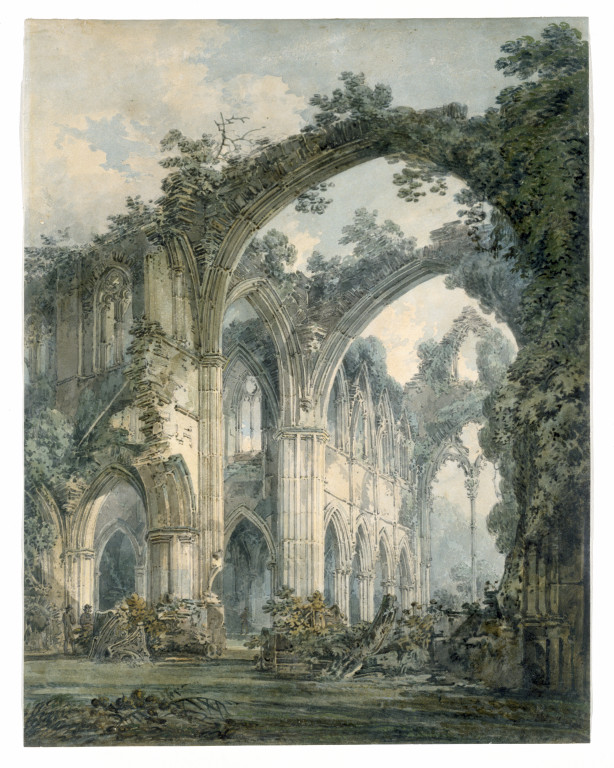
With desaturated blues, greens, and browns, J.M.W. Turner’s watercolor painting Interior of Tintern Abbey presents its namesake, the ruins of a monastery covered in foliage, with somber melancholy. Though once a proud symbol of religion, the abbey has been lost to time and nature, which threatens to strangle the building with vines until the stones crumble to dust and fade away. The abbey’s tall arches tower over small, human figures at the base of the construct, conveying to the viewer that the symbols of religion and nature are beyond humanity’s grasp, but still within sight. In contrast, the poem The Garden of Love by William Blake renders an image of nature being overtaken and obstructed by religion. In the poem, the speaker revisits a lush garden he once used to frequently play in. To his surprise, a chapel had been built and many of the garden’s flowers were replaced with tombstones. There were many priests walking the grounds who began “binding with briars my [the speaker’s] joys & desires” (141). Rather than show how nature can ruin the sanctity of a religious construction, this poem shows how religion can ruin the sanctity of nature. As nature imposes its will on Tintern Abbey, religion imposes its will onto The Garden of Love, destroying its beauty and importance to the speaker. Despite the contradictory nature of these pieces of media, in both, humans are shown as spectators to the seemingly cyclical battle that rages between these two forces (though it is interesting to consider if the priests mentioned in The Garden of Love characterize religion as something created by humans themselves or something that perpetuates itself through the use of humans). Either way, both pieces retain unique identities that serve to enhance and expand each other when compared or contrasted.
Work Cited
Blake, William. The Garden of Love. The Norton Anthology of British Literature: The Romantic Period. 10th ed. Stephen Greenblatt, General Editor. W. W. Norton, 2018. p.141
Brianna,
“Ruined” presents a well-written and insightful examination of J.M.W. Turner’s painting Interior of Tintern Abbey, drawing parallels between its foliage-covered ruins and the conflict between nature and civilization depicted in William Blake’s Garden of Love. Paring the prose for more concise phrasing would make this strong blog post even stronger. I hope that you’ll consider composing a poem that addresses your interpretation of Turner’s painting and Blake’s poem.
LikeLike
Your blog post shows a good insight on the painting, “Interior of Tintern Abbey” and the poem, “The Gareden of Love”. Contrasting the two explains the meaning of both pieces of work, while showing how they come together. Your strongest point would for sure be when you contrasted both the artwork and poem but also connected them. I don’t recommend any revisions,, the blog post was amazing.
LikeLike